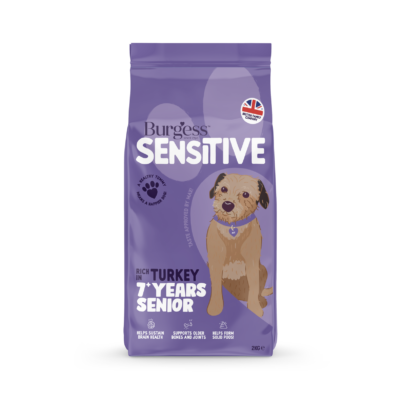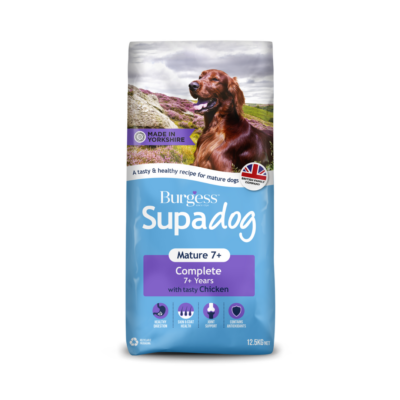However, as your dog goes through different life stages, their nutritional needs change. Puppies needs a different blend of nutrients compared to adults, whilst senior dogs can benefit from being fed food for older dogs that supports their changing needs.
Why choose senior dog food ?
As your dog enters their golden years – which is from around seven years old, depending on their breed – you may start to notice some of the signs of aging. For example, joint or dental problems, which can cause smelly breath, are common.
Feeding your senior dog with a specially formulated dog food for older dogs can help to ease the effects of ageing. This is because they contain ingredients such as added glucosamine for optimal joint mobility and prebiotics to aid the body’s natural defences.
All of our senior dog food , such as the classic Burgess Supadog Mature Dog with chicken and Burgess Sensitive Senior – a senior dog food for sensitive stomachs – is a complete food. This means it contains all the nutrients your senior dog needs, in the correct balance.
What’s more, at Burgess, all of our dog foods are made at our own factory in the heart of Yorkshire, using only ingredients that meet our stringent specifications.
Senior Dog Food FAQs
Got a question about Senior Dog Food? To help you understand more about what to consider when choosing food for older dogs, we’ve put together some really useful answers from our nutrition team at Burgess, the pet care experts.
Need more advice?
If you’re at all unsure about the best senior dog food to feed your dog or have any concerns about specific nutritional requirements, ask your local veterinary practice for advice.
You can also call our expert team, available 9am-5pm, Monday to Friday, on +44 (0)1405 862241 who’ll be happy to help. Alternatively, get in touch with us using our simple online contact form.
Is your dog a Burgess dog? Join the Burgess Pet Club for exclusive offers and rewards.
















